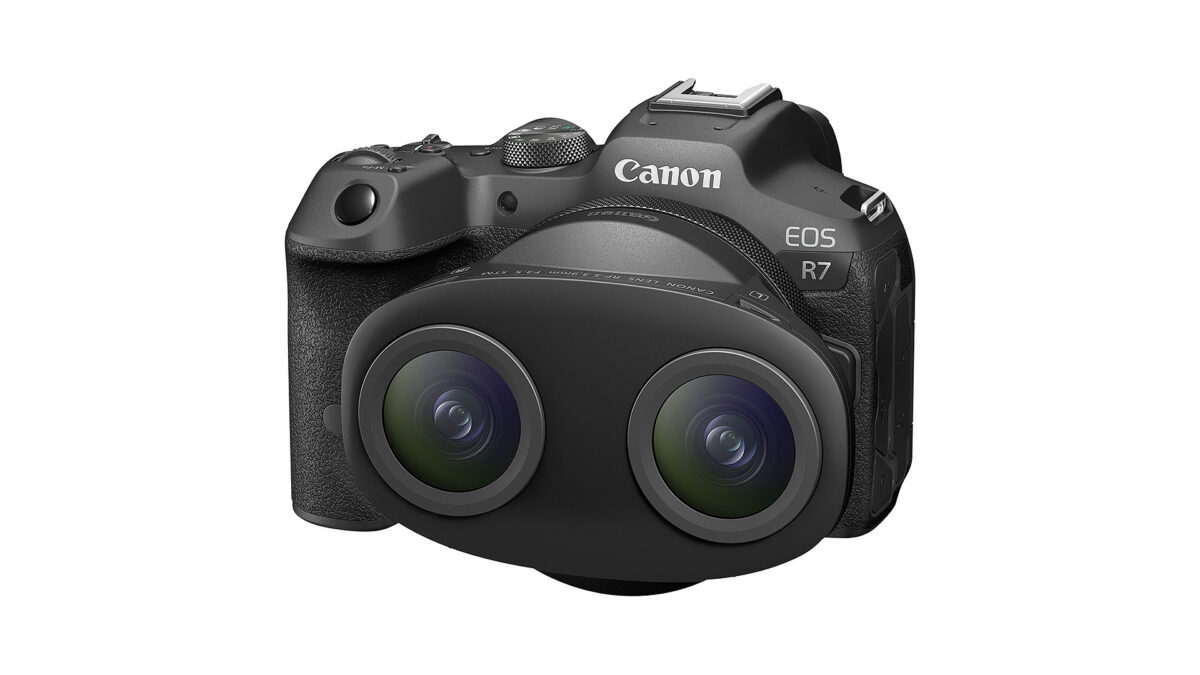Canon announces a new & cheaper VR lens - Here's what it could mean for users

Canon is expanding its VR portfolio and will soon be launching a new dual fisheye lens that will lower the entry-level costs for VR enthusiasts.
Canon has announced a new dual lens for stereoscopic VR photo and video creation.
The Canon RF-S3.9mm F3.5 STM Dual Fisheye Lens is designed for ease and affordability and aimed at content creators who want to produce immersive videos for YouTube and other platforms.
"The RF-S3.9mm F3.5 STM Dual Fisheye lens offers a solution to the growing demand for more affordable and accessible tools in the VR market,” said Brian Mahar, senior vice president and general manager, Canon U.S.A., Inc. “Whether you’re a social creator looking to expand your content into VR, or a filmmaker interested in making the jump from 2D to 3D content, this lens enables creators of all levels to comfortably explore VR content creation and generate amazing content.”
The APS-C Stereoscopic VR lens achieves a 144º wide-angle view and utilizes equidistant projection that makes it ideally suited for every day, virtually hassle-free VR production. The lens also permits multiple methods of camera handling, from hand-
holding, mounting on a gimbal, or tripod-mounting.
Other features worth mentioning are:
- One-shot AF and Left/Right focus Adjustment with Focus ring, helping to create effortless and precise shooting in virtually any environment.
- An Air Sphere Coating (ASC) is a first for Canon non-L Series lenses and helps to minimize ghosting and facilitate pristine image quality.
- Rear filter holder that accommodates both 30.5mm screw-on filters and sheet-type filters, i.e. gelatin or polyester filters.
The lens will be released in June 2024 and will cost around $1,100 (estimated US price). A Canon EOS R7 camera will be required, which will cost about $1,500 (body only). The price for the complete equipment is therefore around 2,600 US dollars.
Canon offers the EOS VR Utility software solution for editing of the stereoscopic footage, which is available via a paid subscription.
The full specifications of the Canon RF-S3.9mm F3.5 STM Dual Fisheye Lens can be found behind the link.
A good sign: Canon is doubling down on VR
This is the second VR lens Canon has launched.
The first model, the Canon RF 5.2mm F2.8L Dual Fisheye Lens, cost around $2,000 at launch in December 2021. It requires an EOS R6 Mark II, Canon EOS R5 or EOS R5 C camera, which cost between $2,500 and $4,300 at launch (body only).
As you can see, Canon's goal with this new lens and camera combination is to lower the cost of entry for content creators and enthusiasts.
While the older combination can shoot photos and videos at an angle of about 190 degrees, the new VR lens only reaches 144 degrees. However, you can expect the resulting image sharpness to be sharper. Patent applications already suggested that Canon was aiming for a narrower angle of view for future lenses.
What an expert thinks about the new VR lens
MIXED asked Daniel Pohl for a preliminary assessment of the new VR lens based on the available information.
Pohl is CEO and founder of immerVR and developer of the VR photo viewing app immerGallery for Meta Quest. He also reviewed the Canon RF 5.2mm F2.8L Dual Fisheye Lens for MIXED.
Here are Pohl's thoughts on the product.
- The autofocus is a welcome addition; such a feature is missing from the old setup.
- The new APS-C R7 body and 3.9mm lens setup is less expensive than the EOS R5 Full Frame and 5.2mm Dual Fisheye setup.
- Still images will be probably around 6,960 x 3,840 pixels instead of 8,192 x 4,096 pixels.
- The R7 can only shoot 4K video, which may not be enough for VR.
- The viewing angle of the final converted images will be between 135 and 144 degrees, while the 5.2mm setup offers 180° after conversion.
- As expected, the new R7 + 3.9mm setup will offer more sharpness than the 5.2mm setup, despite having fewer megapixels.
- This is a positive move overall, encouraging more people to create immersive media and creating new opportunities for sharper VR photography, albeit somewhat limited in angle.
- However, it would be even more important for the consumer market if the VR180/-360 foldable camera with 8K photo and 8K video enters the market soon.
Update from 18 June:
The VR film professional Hugh Hou has now also published a video with valuable first insights. A full review will follow at a later point.
Note: Links to online stores in articles can be so-called affiliate links. If you buy through this link, MIXED receives a commission from the provider. For you the price does not change.